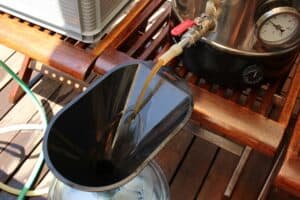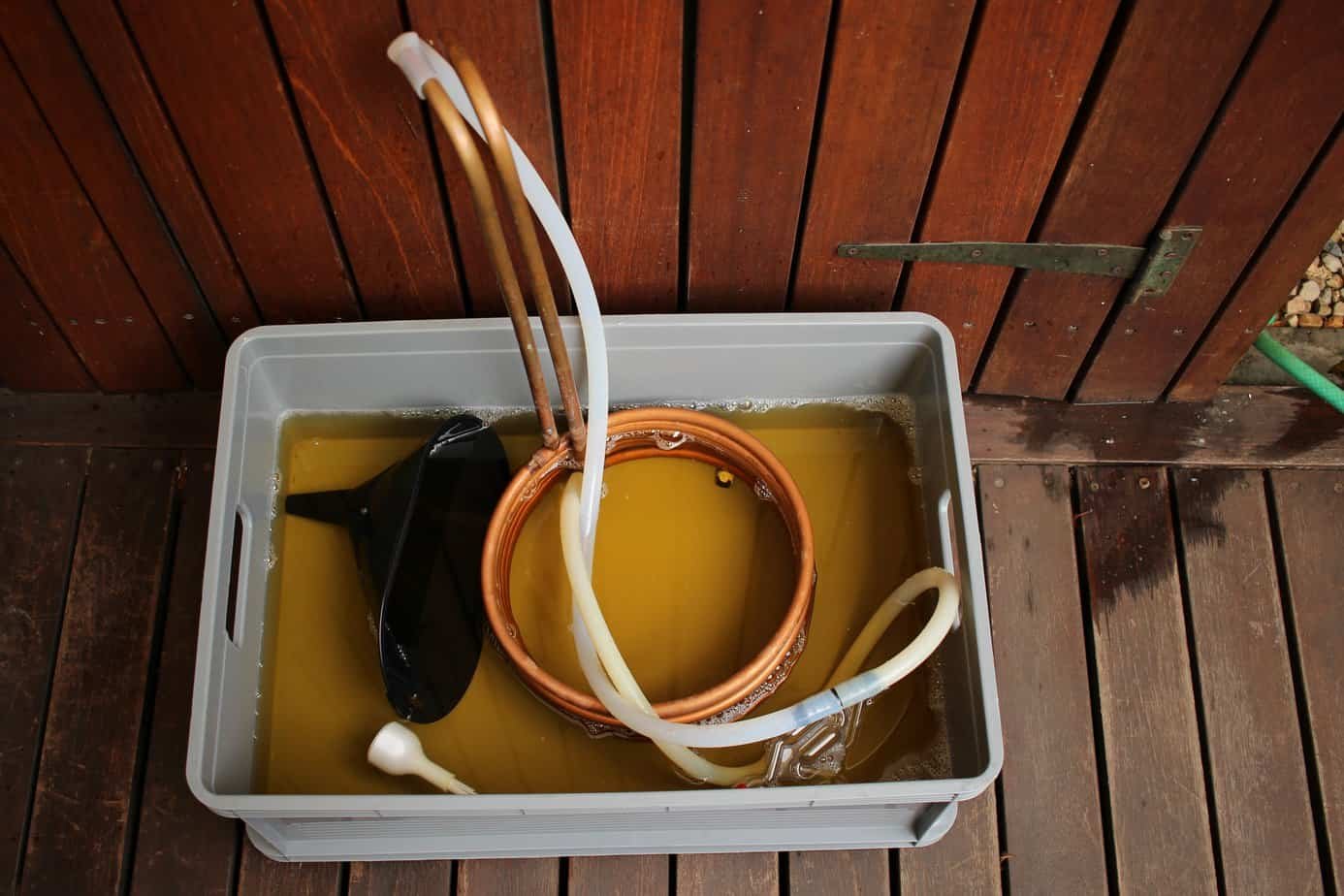For many brewing enthusiasts, the idea of brewing beer outside in the natural environment may seem like an intriguing and exciting challenge. However, the question of whether it’s possible or practical to brew beer outdoors often arises. In this article, the topic of outdoor beer brewing will be explored, examining its feasibility and the factors that should be considered when brewing beer in an outdoor setting.
Brewing beer outside is indeed possible, and many homebrewers have successfully created a wide range of brews in outdoor settings. The key to successfully brewing beer outdoors lies in the ability to create and maintain a controlled environment, an aspect in which the brewer has to pay close attention to factors such as temperature control, cleanliness, and equipment management.
One of the primary concerns when brewing beer outdoors is ensuring proper temperature regulation during the various stages of the brewing process. While ambient temperatures may vary significantly, a brewer must monitor and manage them to achieve the desired results. Additionally, maintaining cleanliness and properly managing equipment are essential elements for a successful outdoor brewing session, as contaminants and environmental factors can impact the quality and taste of the finished product.

Advantages of Brewing Beer Outside
Brewing beer outside has several benefits when compared to brewing indoors. Key advantages include improved space and ventilation, easier temperature control, and enhanced cleanliness and sanitation.
Space and Ventilation
One of the primary advantages of outdoor brewing is increased space, which allows for a more comfortable brewing setup. Working in a spacious outdoor area prevents overcrowding and gives brewers enough room to maneuver around and access their brewing equipment.
Additionally, brewing outside provides better ventilation. The brewing process can generate strong aromas, which may be undesirable in enclosed indoor spaces. An open-air environment helps to dissipate these smells, ensuring a more pleasant experience for the brewer.
Temperature Control
Temperature control is a critical aspect of successful beer brewing. Brewing outside may naturally regulate the temperature, especially during colder months when fermentation requires lower temperatures.
Outdoor brewing allows brewers to take advantage of ambient temperatures, reducing the need for additional cooling equipment. This can result in energy savings and reduce the overall cost of brewing.
Cleanliness and Sanitation
Outdoor brewing environments offer better potential for cleanliness and sanitation compared to confined indoor spaces. This is particularly important given that proper sanitation is crucial to prevent contamination and off-flavors in the final product.
When brewing outside, the risk of accumulating dust, debris, and other contaminants found in closed spaces is minimized. Moreover, the ease of hosing down equipment and the brewing area after use further contributes to maintaining a clean brewing environment.
Challenges of Outdoor Beer Brewing
Weather Conditions
One of the main challenges faced by brewers when brewing beer outdoors is dealing with unpredictable weather conditions. Factors such as sunlight, temperature, humidity, and wind can all have an impact on the brewing process.
Direct sunlight, for example, can lead to off-flavors in the beer due to its interaction with hop compounds. Temperature fluctuations may also affect the fermentation process, making it difficult to maintain consistent flavor profiles. Moreover, wind can introduce unwanted contaminants in the form of airborne debris or dust.
Pest Control
Another challenge associated with outdoor beer brewing is pest control. Insects and rodents are attracted to the sweet odor of the brewing process, posing a risk of contamination to the beer.
To address this issue, it is essential to maintain a clean brewing environment and utilize methods such as screens, bug zappers, and traps to minimize the presence of pests. Additionally, employing proper sanitation practices and promptly storing ingredients in sealed containers can help mitigate this risk.
Equipment Safety
Ensuring the safety and proper functioning of brewing equipment is a vital aspect of outdoor beer brewing. Exposure to weather elements can result in corrosion, rust, or damage to sensitive equipment, which in turn may affect the quality and consistency of the beer produced.
To protect the brewing equipment, it is recommended to invest in weather-resistant covers or store the equipment indoors when not in use. Regular maintenance and cleaning are also essential to prolong the life of the equipment and ensure reliable performance.
Selecting the Right Equipment
When planning to brew beer outdoors, it is essential to choose the appropriate equipment to ensure a seamless brewing process and a high-quality final product. This section will discuss the brewing systems and fermentation vessels required for outdoor brewing.
Brewing Systems
Various brewing systems are available for outdoor brewing, each with its unique benefits and drawbacks. Here are some options to consider:
- All-in-One Systems: These are compact units that include a mash tun, boil kettle, and heat source. They are great for beginners and those with limited space for brewing equipment.
- Three-Vessel Systems: This setup consists of a separate mash tun, lauter tun, and brew kettle. It may take more time to set up and requires more space, but it allows for increased control over the brewing process.
- Two-Vessel Systems: These systems combine the mash tun and lauter tun into one vessel, requiring only two pieces of equipment instead of three. This configuration is a balance of convenience and control.
When selecting a brewing system, consider factors such as available space, brewing capacity, and the degree of control desired during the brewing process.
Fermentation Vessels
Fermentation vessels are crucial for a successful outdoor brewing experience, as they directly impact the quality and taste of the finished beer. There are different types of fermentation vessels to consider:
- Plastic Buckets: They are affordable and lightweight, but can be prone to scratching, which could harbor bacteria and affect the beer’s taste.
- Glass Carboys: These vessels are more durable and less likely to scratch, but are heavier and more fragile. The transparent glass allows the brewer to monitor fermentation without opening the vessel.
- Stainless Steel: Stainless steel vessels are durable, corrosion-resistant, and can be easily sanitized. However, they are usually more expensive than their plastic or glass counterparts.
When selecting a fermentation vessel, consider elements such as durability, ease of cleaning, and how often the equipment will be used.
Outdoor Brewing Techniques and Best Practices
Outdoor brewing provides a unique and enjoyable way to create your own beer. Here we discuss some of the essential techniques and best practices to ensure a successful outdoor brewing experience.
Organizing Your Brew Area
Prepare an efficient and well-organized outdoor brewing area to make the process smoother. Consider the following recommendations:
- Choose a stable and flat surface to position your brewing equipment.
- Organize the brewing materials, equipment, and ingredients in a way that they are easily accessible.
- Utilize storage containers and compartments to keep things tidy and safe.
- Make sure the space is well-lit for daytime brewing and has proper lighting for evening sessions.
Maintaining a Clean Environment
A clean brewing environment is vital to reduce the risk of contamination and ensure high-quality beer production. Here are some suggestions:
- Sanitize all equipment and tools thoroughly before and after use.
- Regularly remove any debris, fallen leaves, or dirt from your brewing area.
- Keep a clean water source nearby to easily rinse and clean equipment during brewing.
- Properly maintain and store equipment when not in use to protect it from the elements.
Preparing for Weather Changes
Outdoor brewing is susceptible to weather fluctuations, which can impact the brewing process. Be prepared for changes in weather by:
- Place your brewing set up in an area that offers natural protection from the wind, such as near a wall or under a tree.
- Monitor weather forecasts closely, and plan your brewing sessions on days with milder conditions.
- Consider using a temporary shelter, such as a gazebo, to protect your brewing area from rain or strong sunlight.
- Make necessary adjustments to your brewing process in response to temperature changes, such as modifying boil times or fermentation temperatures.
Can you Home Brew Beer in a Shed?
Yes, you can homebrew beer in a shed. In fact, many home brewers prefer to use a shed for their brewing activities, as it offers better ventilation and more space to work with. There are several aspects to consider when setting up your shed for brewing, and taking the necessary precautions and preparations can help ensure a wonderful brewing experience.
Best Way to Prep Your Shed to Brew Beer
Before you begin brewing in your shed, it is crucial to ensure that it is clean, well-ventilated, and properly equipped with the necessary tools and equipment. Consider the following steps to prepare your shed for brewing success:
- Clear and clean: Remove any clutter from your shed, and thoroughly clean the surfaces and corners. Sanitation is critical in preventing unwanted bacteria or germs from contaminating your brew.
- Storage and organization: Ensure an organized space by having shelves, cabinets, and proper storage for your brewing equipment such rolls of tubing, kegs, and fermenters. Maintain designated areas for different brewing stages.
- Temperature control: Install proper insulation and temperature control systems. Consistent and appropriate temperatures are essential to the fermentation process, aiding the yeast to function efficiently.
- Ventilation: Brew sheds need to be properly ventilated for heat to escape, avoiding the creation of harmful gas buildup. Install exhaust fans or vent hoods to promote a safe brewing environment.
- Electricity and water supply: Make sure your shed has a reliable electricity supply and access to clean water. Water is crucial for both the brewing process and cleaning, while electricity is needed for powering equipment and maintaining temperature control.
By creating an ideal brewing environment in your shed, you can enjoy a satisfying and productive homebrewing experience. It is important to follow proper preparation and ensure your workspace is suitable for the task at hand.
Conclusion
Indeed, brewing beer outside is a feasible and enjoyable endeavor for those who appreciate the art of home brewing. By selecting suitable equipment and paying close attention to the environment, enthusiasts can achieve excellent results in an outdoor setting.
Several key aspects must be considered when brewing beer outdoors:
- Temperature: Ensuring the brewing process occurs within the ideal temperature range is crucial.
- Sanitation: Maintaining cleanliness and proper sterilization practices prevents contamination.
- Weather: Adequate planning and preparation for weather conditions goes a long way in successful outdoor brewing.
With proper planning, preparation, and attention to detail, brewing beer outside can yield fantastic results while offering a unique and engaging brewing experience. Enjoy the great outdoors, and cheers to successful home brewing!
Recent Posts
Does Bud Light Seltzer Taste Like Beer? - Unveiling the Flavor Profile
The popularity of hard seltzers has risen dramatically in recent years, with an increasing number of consumers seeking a lighter, refreshing alternative to traditional alcoholic beverages. Bud Light...
How to Flavor Moonshine with Extract: Tips and Tricks for a Delicious Batch
Moonshine, a homemade distilled spirit, has a reputation for its strong flavor and robust alcohol content. Many people find the taste too harsh to enjoy on its own, which is why flavoring moonshine...

